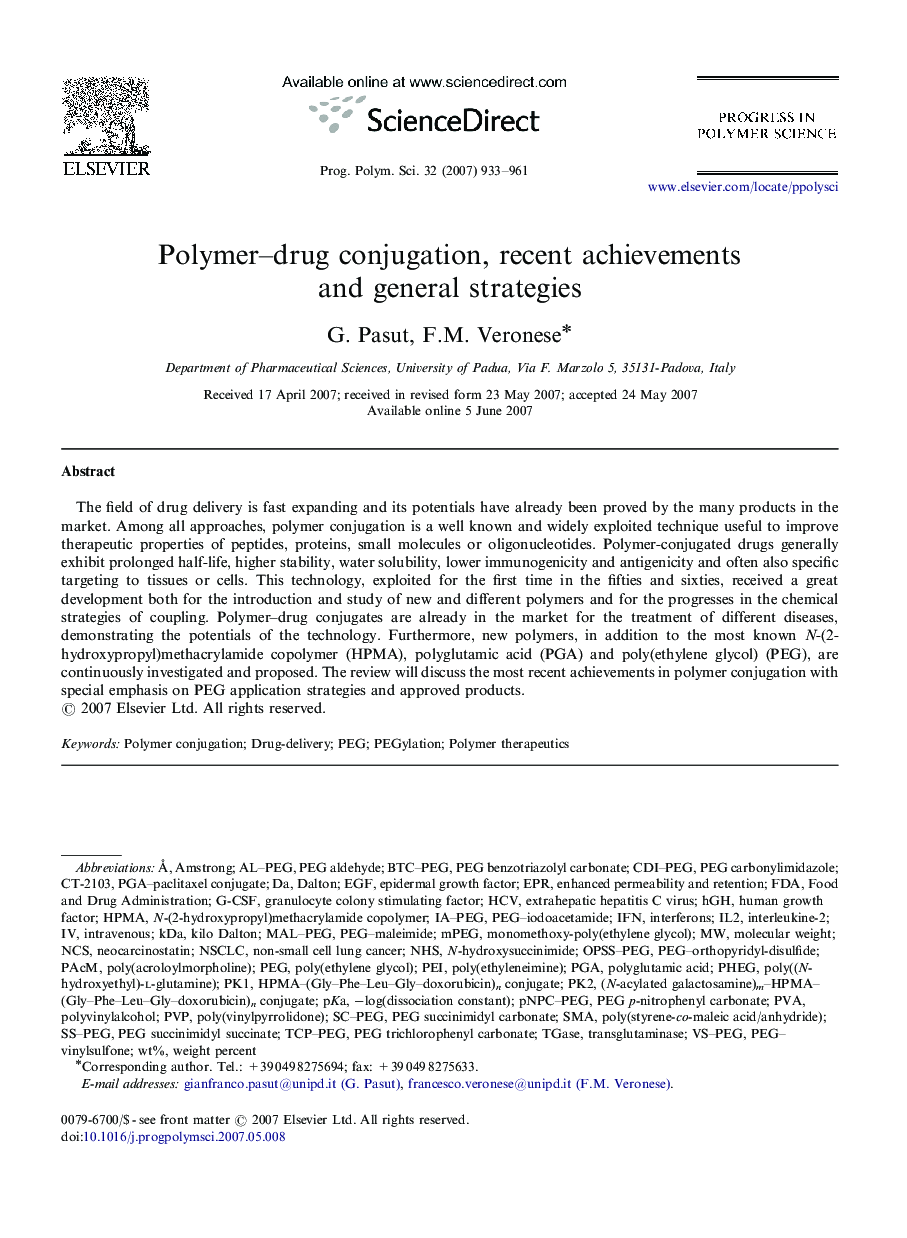| Article ID | Journal | Published Year | Pages | File Type |
|---|---|---|---|---|
| 5209012 | Progress in Polymer Science | 2007 | 29 Pages |
Abstract
The field of drug delivery is fast expanding and its potentials have already been proved by the many products in the market. Among all approaches, polymer conjugation is a well known and widely exploited technique useful to improve therapeutic properties of peptides, proteins, small molecules or oligonucleotides. Polymer-conjugated drugs generally exhibit prolonged half-life, higher stability, water solubility, lower immunogenicity and antigenicity and often also specific targeting to tissues or cells. This technology, exploited for the first time in the fifties and sixties, received a great development both for the introduction and study of new and different polymers and for the progresses in the chemical strategies of coupling. Polymer-drug conjugates are already in the market for the treatment of different diseases, demonstrating the potentials of the technology. Furthermore, new polymers, in addition to the most known N-(2-hydroxypropyl)methacrylamide copolymer (HPMA), polyglutamic acid (PGA) and poly(ethylene glycol) (PEG), are continuously investigated and proposed. The review will discuss the most recent achievements in polymer conjugation with special emphasis on PEG application strategies and approved products.
Keywords
PVAN-(2-hydroxypropyl)methacrylamide copolymerPACMPHEGpK2FDAHPMATGasePK1N-hydroxysuccinimideIL2NHSpKaNCSmPEGkDaPEIEGFPGAPVPPEGylationhGHwt%Polyglutamic acidIFNinterferonsInterleukine-2Drug-deliveryTransglutaminaseEPRIntravenousdaltonSMAweight percentPolymer TherapeuticsFood and Drug AdministrationNSCLCNon-small cell lung cancerGranulocyte colony stimulating factorepidermal growth factorG-CSFEnhanced permeability and retentionPolymer conjugationHCVMolecular weightPoly(ethylene glycol)Poly(ethyleneimine)PolyvinylalcoholPoly(vinylpyrrolidone)PEGKilo Dalton
Related Topics
Physical Sciences and Engineering
Chemistry
Organic Chemistry
Authors
G. Pasut, F.M. Veronese,
